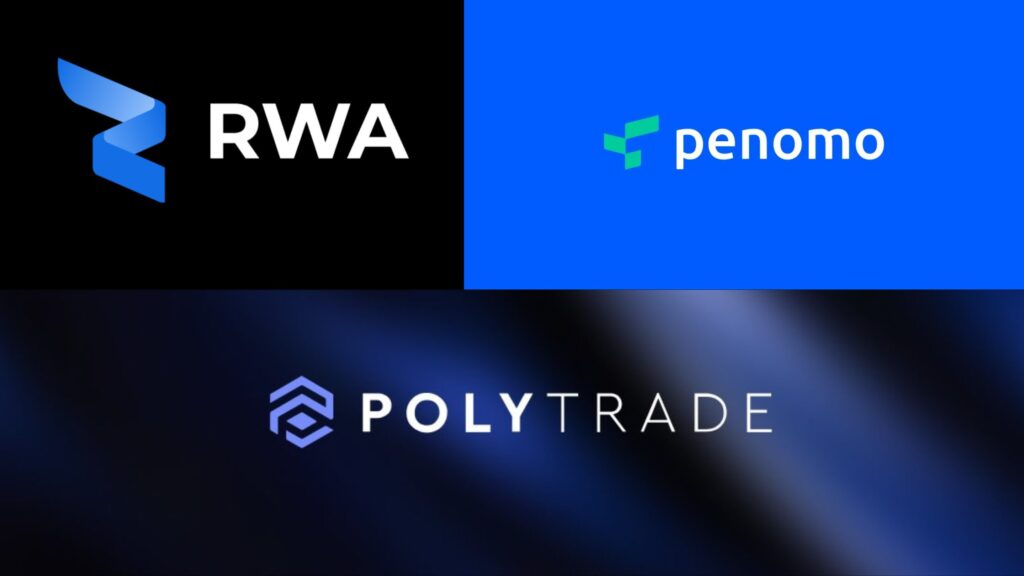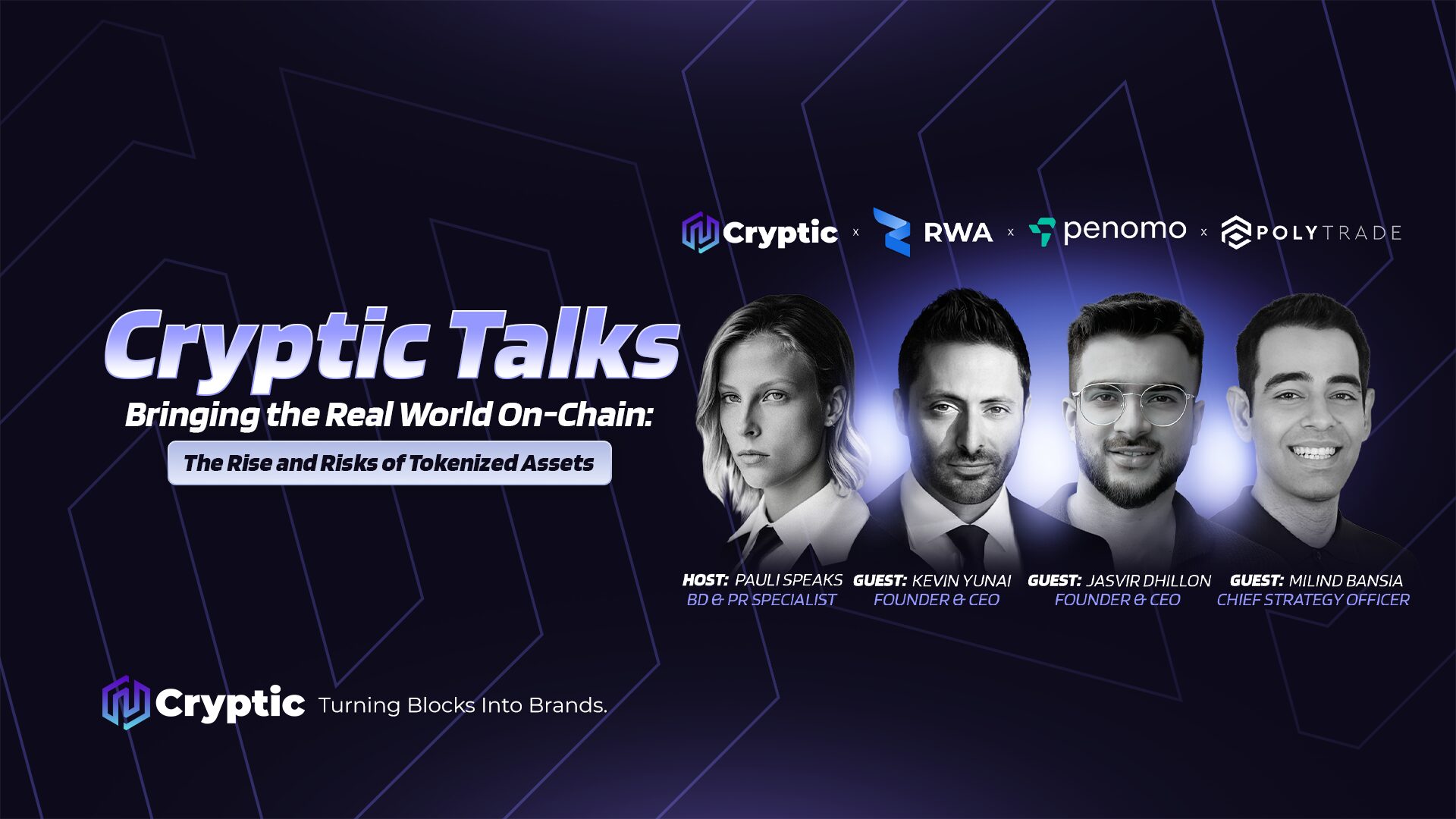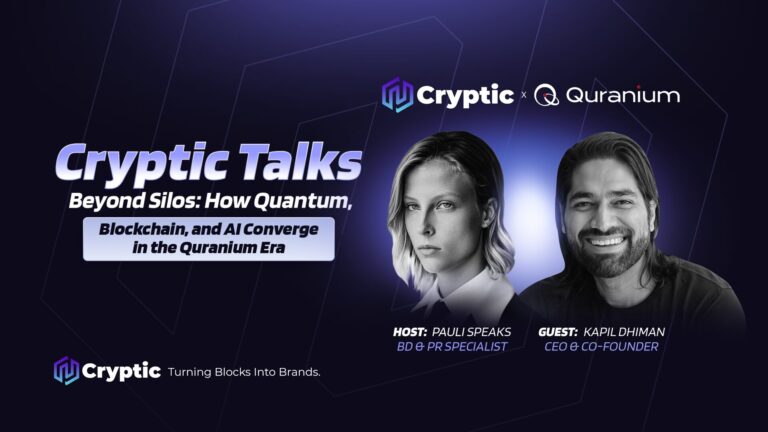Turning real-world assets into liquid, accessible and scalable investment opportunities is one of the most ambitious frontiers of blockchain. In this conversation, Kevin Yunai (RWA), Milind Bansia (Polytrade) and Jasvir Dhillon (Penomo) reveal how trusted infrastructure, real liquidity and interoperable networks are redefining how value is created and exchanged. Their insights offer a clear view of what’s required for tokenization to move from theory to a reliable bridge between traditional capital and the digital economy.

Leaders driving the tokenization of real-world assets
In this conversation, the discussion focused on how blockchain technology is reshaping the market for real-world assets, making tokenization a bridge between global capital and opportunities in sectors such as real estate, credit, and structured funds. To enrich the debate, three voices with complementary expertise shared their perspectives and practical insights.
Kevin Yunai, Founder and CEO of RWA Inc., brought a strategic view shaped by his background in developing traditional financial products and connecting them with institutional investors. His experience emphasized the importance of compliance, governance, and trust as essential pillars for scaling this emerging asset class.
Milind Bansia, Chief Strategy Officer at Polytrade, illustrated how tokenization can expand access to credit for small and medium-sized enterprises in emerging markets, aligning real-world financing needs with global liquidity. Jasvir Dhillon, Founder and CEO of Penomo, added depth by explaining how interoperability between blockchains and the integration of diverse markets and regulatory frameworks are fundamental to creating liquidity, lowering barriers, and driving broader adoption.
The vision of each player
The presence of RWA Inc, Polytrade and Penomo highlighted how different strategies and specializations can converge to advance the tokenization of real-world assets. RWA Inc brings a clear focus on connecting global investors to tokenized opportunities, with deep expertise in creating real liquidity for sectors like real estate and private equity. By building trust and compliance frameworks, they aim to open traditional markets to the efficiency of blockchain.
Polytrade adds to this ecosystem by designing solutions that unlock the value of assets that have historically been hard to trade, with special attention to innovative real estate initiatives. Penomo complements the debate with a strong emphasis on practical use cases for tokenizing tangible resources, providing decentralized infrastructure and incorporating advanced privacy technologies like zero-knowledge proofs. Together, these approaches illustrate how the market is moving from theory to scalable, real-world applications.
Real estate at the forefront of tokenization
The real estate sector has been establishing itself as fertile ground for the adoption of asset tokenization, precisely because it combines characteristics that directly benefit from this technology. With properties naturally being high-value and low-liquidity assets, digital fragmentation enables new forms of access, facilitates transactions, and attracts investors who previously remained on the sidelines of this market.
Despite these opportunities, there are still significant challenges, especially around creating real liquidity and meeting regulatory requirements. Interoperability between platforms, strengthening legal guarantees, and investor education are key components to unlocking this potential.
In recent months, the sector has seen important developments: structured funds focused on tokenized real estate, new platforms for peer-to-peer trading, and partnerships between traditional players and Web3 companies all reinforce the idea that real estate will continue to play a leading role in the transition from physical assets to scalable digital records.
Liquidity is the fragile link in tokenization
The promise of asset tokenization relies on the ability to fractionalize valuable assets and open access to a wider investor base; however this potential depends heavily on attracting enough buyers and sellers to maintain an active market. As discussed during the conversation the creation of real liquidity remains one of the biggest challenges faced by projects in this space. Success requires more than technology; it involves building strong communities fostering trust through transparent communication and leveraging global investor networks. Marketing efforts and regulatory clarity also play a crucial role in encouraging participation and confidence. Only by addressing these factors can tokenization move beyond theory and deliver on its promise of liquidity and accessibility.
The role and risk of traditional intermediaries
In the evolving landscape of asset tokenization, traditional intermediaries such as brokers and centralized registries face significant shifts. Historically, they have played a crucial role in ensuring trust, security, and proper asset transfer through manual processes. However, as discussed during the conversation, the rise of automated on-chain solutions threatens to streamline or even replace many of these functions, potentially reducing costs and increasing market efficiency. This shift requires intermediaries to rethink their roles and adapt to remain relevant in an increasingly decentralized and digital ecosystem.
At the same time, this transformation carries inherent risks for established players. The transition from manual, centralized processes to immutable smart contracts challenges longstanding business models and introduces regulatory complexities. The discussion highlighted that successful integration between traditional systems and blockchain technology demands collaboration and innovation. Ultimately, the future of traditional intermediaries will depend on their ability to embrace change while maintaining the security and trust that underpin the market’s stability.
Generic products versus strategic niches
Not all assets are equally suited for tokenization, and the distinction between generic products and strategic niches is crucial. Generic assets tend to become commoditized, which often results in low margins and limited differentiation. This commoditization can reduce the effectiveness of tokenization by turning assets into interchangeable units that compete mainly on price.
Conversely, strategic niches and specialized asset structures present real opportunities to add value. These assets often have unique features, complex financial frameworks, or specific market demands that benefit from the transparency, liquidity, and accessibility that tokenization offers. Focusing on these areas allows for more meaningful innovation and sustainable growth within the tokenized asset landscape.
From what is real to what is useful questioning the concept of RWA
The definition of what constitutes a real world asset (RWA) goes beyond the simple tangibility of the asset involving a reflection on its utility and ability to generate value when tokenized. Not every physical asset necessarily represents an effective opportunity for liquidity or accessibility while some intangible assets can prove extremely valuable when properly represented digitally. This discussion broadens the traditional understanding of RWA highlighting how tokenization can transform idle resources into dynamic financial instruments.
By questioning the boundaries between tangible and intangible the debate reveals that the potential of tokenization lies in capturing value that was previously inaccessible or underutilized regardless of the physical nature of the asset. Thus the practical utility of the tokenized asset, its ability to be traded fractionalized and integrated into new markets, becomes the true differentiator redefining what should be considered a real world asset in the digital economy.
The next frontier in asset tokenization
The future of asset tokenization relies on a fluid environment where instant liquidity becomes accessible to a wide range of investors. The ability to trade assets in real time, free from traditional bureaucratic hurdles, is crucial to expanding market reach and efficiency. However, this liquidity depends heavily on interoperability between different blockchains, enabling secure communication and transfer of digital assets across diverse platforms, thereby creating a connected and dynamic ecosystem.
Equally important to this future is the trustworthiness of the underlying infrastructure supporting on-chain operations. Reliable oracles ensure that real-world data is securely and accurately fed into smart contracts, while privacy-enhancing technologies such as zero-knowledge proofs protect sensitive information without sacrificing transparency or verifiability. This combination fosters a secure and efficient environment for tokenization, paving the way for new methods of value creation and capture that were previously unattainable.
Exploring these developments and understanding the solutions that make such a future possible is essential for anyone looking to stay ahead in the evolving landscape of digital assets. Engaging with companies like RWA Inc, Polytrade and Penomo offers invaluable insights and opportunities to participate in the next wave of innovation in asset tokenization.
Disclaimer: This article is based on an interview and reflects the personal views and opinions of the featured speaker. It is intended for informational purposes only and should not be considered financial, investment, or legal advice. Readers are encouraged to conduct their own research and consult with qualified professionals before making any financial decisions.



